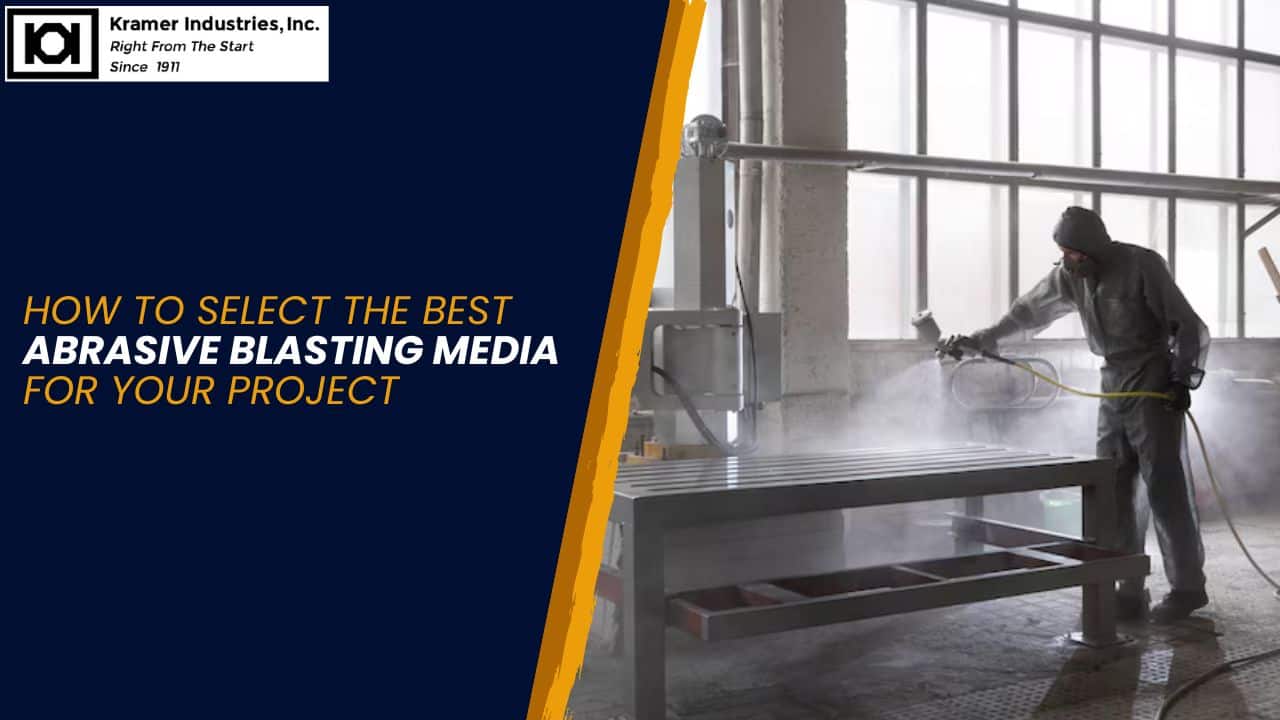When rust settles in or paint begins to peel, it’s a clear sign your surface is calling for a reset. This is the time to resort to abrasive blasting. It’s not exactly a new idea, but it’s still the best solution for surface prep. This method doesn’t just clean; it transforms. This transformation doesn’t come from the blast alone but from choosing the perfect abrasive blasting media. Get it right, and you will have results that speak for themselves.
When you aim a blast of tiny bits at a stubborn surface, you can watch years of wear vanish. However, not all blasting materials work in the same manner.
Pick the right abrasive blasting media, and you go beyond cleaning to crafting a surface that’s sharp, smooth, and ready for any future steps.
But before we choose your blasting agent, let’s talk about what abrasive blasting really is.
What Is Abrasive Blasting?
Abrasive blasting is not scrubbing with soft grease; it’s like scrubbing with force. Tiny particles called blasting media are hurled at a surface using air, water, or a specialized machine. It’s speed meeting grit with a goal to strip away rust, paint, or buildup and reveal a surface that’s bare, bold, and built for what comes next.
Tip 1: Soft Abrasives for Delicate Jobs
If you’re not sure how tough your surface is, it’s wise to begin with gentle abrasives. Soft abrasive blasting media like walnut shells and corn cobs are perfect for delicate jobs.
They’re kind to wood and other soft materials because they clean without cutting deep. They are the friendly cleaners, and they’re biodegradable. Once the job’s done, they go back to nature and get degraded in a natural way.
Tip 2: Add Glass Beads to Make It Gleam
For a clean, smooth, satin-like finish, glass beads are quite a good choice. Made from soda-lime glass, these tiny round particles are soft on the surface but strong enough to clean.
They don’t cut into the material like rougher options, so they’re great for keeping things intact while making them shine. The advantage of glass beads is that you can reuse glass beads dozens of times. That means less waste and more value in every blast.
Tip 3: Aluminum Oxide for Paint Elimination
If you’re looking to clear out stubborn rust or stubborn paint without much effort, aluminum oxide steps in like a seasoned abrasive. It’s gritty, sharp, and makes an impact. Unlike gentler options like glass beads, this abrasive blasting media digs right in and strips away the mess and keeps your surface in check. It’s the perfect mix of force and control that yields results exceedingly well.
Tip 4: Use Plastic in Planes, Cars, and Boats
Plastic might sound weak, but when it comes to blasting fiberglass parts, it’s just right. In the world of aerospace and auto repair, you often need to remove paint without hurting the structure. Plastic abrasive blasting media works seamlessly here.
It’s light and soft and creates almost no dust. That means clearer work areas and safer air to breathe. If your parts are sensitive, plastic gives you control without the scratches.
Tip 5: Silicon Carbide for Speed Blasting
When you’re chasing speed, silicon carbide steps up with all its might. As sharp as a blade, it is ready to carve its way through glass, stone, and metal. It doesn’t slow down and doesn’t soften up. If your job needs deep etching or serious surface prep, this is the grit to go to.
Tip 6: Steel Media for When Things Get Tough
If you’re working with steel, why not use steel to clean it? Steel media comes in two forms: shot and grit. The shot is round and used for smoothing and peening (which strengthens the surface). Grit is angular and used for cutting and scraping.
Steel abrasive blasting media is strong and can be reused many times. It’s great for heavy-duty projects, especially where you need to remove scale, paint, or deep rust from metal surfaces.
Tip 7: Say No to Sand
Abrasive blasting isn’t the same as sandblasting anymore. Sand was once upon a time the classic choice. But now it is off the list, and for good reason.
Sand contains silica, and breathing in fine silica dust can cause serious lung problems. Sand also holds moisture. That moisture can clog machines and cause rust where you don’t want it. With so many better options out there, sand doesn’t make it to the list of abrasives anymore.
What Else Matters When Choosing an Abrasive?
Choosing the right abrasive blasting media isn’t just about softness or strength. Think about:
- Reusability: Can you use the media more than once?
- Dust levels: Will it make a mess? Is it safe to breathe?
- Finish quality: Do you want a rough surface or a polished one?
- Cleanup: How easy is it to clear the leftover media?
Every detail matters. The surface, the finish, and the environment all add up to the right blasting choice.
Conclusion
Abrasive blasting is an art and a science. And like any good craft, your tools matter. With the right abrasive blasting media, you can strip old finishes, remove rust, prep for paint, or just make things look new again.
Start soft if you’re unsure. Go tough when needed, and stay away from sand. That’s the recipe for safer, smarter, and better results.
Discover top-quality abrasive blasting media and equipment at Kramer Industries. They are engineered for precision and built to last. Elevate your project now!



